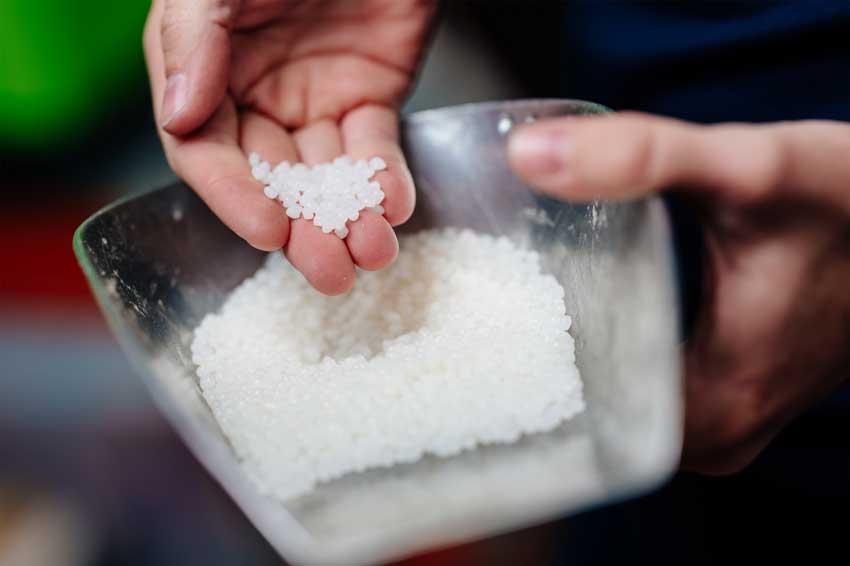Bioplastics for use in optical technologies
Researchers from Germany, Netherlands, receive funding
The aim is to develop sustainable materials for optical applications such as headlights, lenses, reflectors and light guides. Up until now, these products have been made from petroleum-based plastics like polycarbonate and polymethyl methacrylate (PMMA), which pollute the environment.
The research project is funded by the German Federal Ministry of Food and Agriculture (BMEL) to the tune of approximately 885,000 euros and is part of its ‘Renewable Resources’ funding programme. The project, co-ordinated by the AMIBM, was initiated by Hamm-Lippstadt University of Applied Sciences, where the predecessor project ‘Polylactide as a high-tech material for optical components of a luminaire – Renew-Opt’ was recently successfully completed.
The unrestricted production of petroleum-based plastic products is still standard practice, despite all efforts. Calls for alternatives based on renewable resources are not only growing louder in scientific and political circles, but are also being heard from society. “Currently, the focus is on applications with rather low material requirements and markets with high sales volumes. Some progress is being made in the field of optical materials. For example, in the form of ‘modified polycarbonates’, whereby isosorbide – a renewable resource – is used in the plastic as a second monomer. These materials are used in displays and optical films – though at the moment only very rarely,” says professor Klaus Huber from the department of chemistry at Paderborn University, who is leading the project at the university. Professor Gunnar Seide from Maastricht University explains: “Unfortunately, sustainability is not yet a selling point for consumers. It is, of course, expected, but is expensive. This means that we need sustainable high-performance polymers with technical properties that are cost-effective. And this is what we are aiming to achieve with our PLANOM project.”
The scientists’ aim is to use a specific raw material from the bio-plastics family as an optical material in lights and headlights. Polylactide has emerged as a suitable candidate. “Polylactide, or polylactic acid, is obtained from renewable raw materials and is produced during the fermentation of carbohydrates in a process known as ‘lactic acid fermentation’. We know this from sauerkraut, for instance. With our approach, we address several problems with conventional polymer materials. The move towards short-term renewable resources helps establish a materials economy that is not dependent on petroleum and, at the same time, significantly cuts CO2 emissions, thereby contributing to the objectives of the Paris Agreement. A third aspect concerns looking at the entire material life cycle. This primarily involves avoiding microplastics, due to recycling concepts, and assessing biodegradability. As an exclusively bio-based polymer, polylactide is fully degradable under certain conditions. This reduces the amount of time it remains in nature. In addition to the necessary application-specific properties, these are major incentives for industry to switch to such alternative materials.”
And polylactide not only offers advantages in terms of sustainability: “It also has very good optical properties for use in the visible area of the electromagnetic spectrum. Plus, the production capacities for polylactide are huge. This makes it relatively price-competitive compared to conventional polymers,” says Huber.
Research is initially being conducted into the use of polylactide in conjunction with LEDs, well-known as an efficient and environmentally-friendly light source. Huber explains: “In particular the extremely long service life and the radiation emitted at the short-wave end of the visible spectrum, i.e. the high blue component of LED light, place extreme demands on optical materials.” This means that extremely durable materials need to be used. The problem: Polylactide softens at around just sixty degrees Celsius. LED-based lights, however, can reach temperatures of up to eighty degrees when in use.
A further challenge is its crystallization behaviour. As of around sixty degrees, crystallites form that make the material cloudy. The scientists are working on either avoiding the formation of crystallites altogether or replacing this process with controlled crystallization, whereby only crystallites with dimensions that do not interfere with the light are formed. “The project aims to make it possible to use polylactide in high-performance technical lighting applications for the very first time, specifically as a lens material in bike headlights. To this end, we’re working closely with the company Busch und Müller in Meinerzhagen. Other lighting companies, including Hella in Lippstadt, are also interested in the progress we’re making and are seeing a growing need for the use of sustainable solutions in their products. In Lippstadt, we’re using specially developed equipment to investigate the resistance of the polylactides developed in the project to short-wave visible radiation,” says Prof Jörg Meyer from Hamm-Lippstadt University of Applied Sciences.
In Paderborn, the focus is on determining the molecular nature of the polylactides to be used, with a view to the subsequent use of the material. The researchers are in particular investigating the melting and crystallization behaviour of the materials developed. Huber is investigating the extent to which additives or irradiation of the samples improve this behavior with regard to the desired optical properties.
In addition to scientific and technical findings, the project is expected to provide significant economic stimuli. A sustainable optical bio-plastic with competitive properties will improve the competitiveness of light manufacturers and automotive suppliers. The project will also train early-career researchers and junior academics for positions in industry and research institutions. The team anticipates to have the first results at the end of 2022.
Contact
Universität Paderborn
Warburger Str. 100
33098 Paderborn
Germany
+49 5251 60-0







